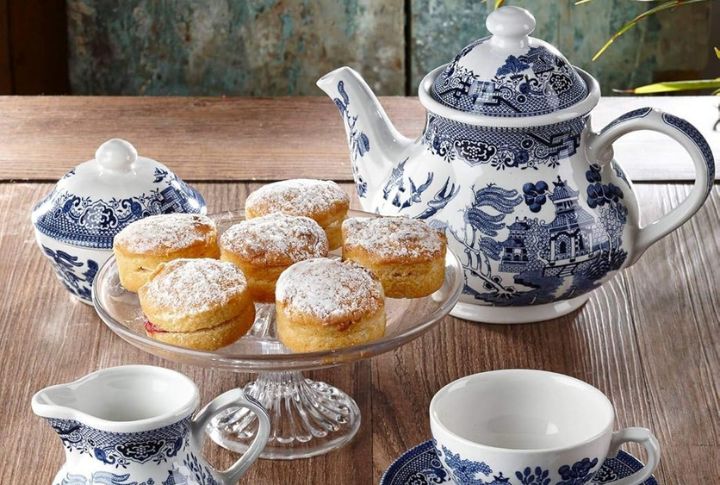
Every family has a set of dishes that holds more memories than the dishes served in it. These vintage patterns once filled dining rooms with grace and a touch of everyday joy. Decades later, they still whisper stories of hospitality and timeless design. Come take a sentimental journey through the dinnerware that shaped how America dined.
Franciscan Desert Rose
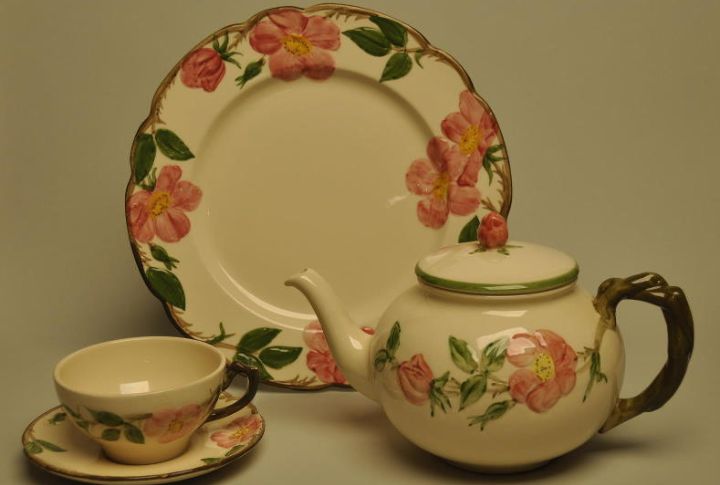
When Jacqueline Kennedy graced White House tables with Franciscan Desert Rose dinnerware, she was setting a trend. First introduced in 1941 by Gladding, McBean & Co., this beloved pattern’s hand-painted pink roses and green leaves captured the carefree beauty of California’s wildflowers.
Blue Willow By Churchill
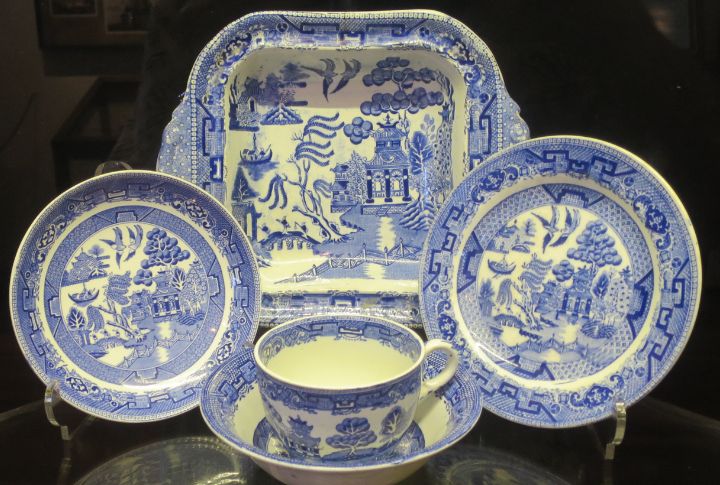
A tale of forbidden love unfolds across every Blue Willow plate, and that story has been enchanting diners for centuries. Born in late 18th-century England, this romantic chinoiserie classic turned simple porcelain into art. Among its many makers, Churchill remains a standout, keeping the blue-and-white legacy alive and endlessly mixable with other vintage designs.
Corelle Butterfly Gold
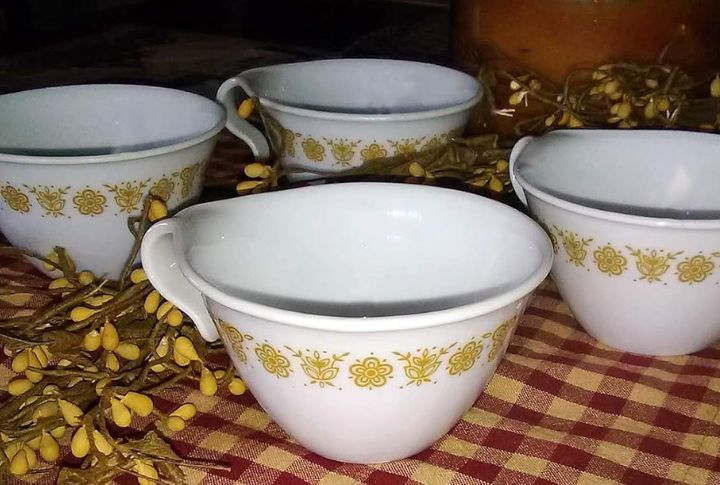
Back in the 1970s, when fragile china made hosting a nerve-wracking affair, Corelle changed everything. The 1970 Vitrelle glass innovation introduced lightweight, chip-resistant plates that could actually survive daily life. The Butterfly Gold pattern and flowers that still delight collectors and thrift hunters today.
Royal Albert Old Country Roses
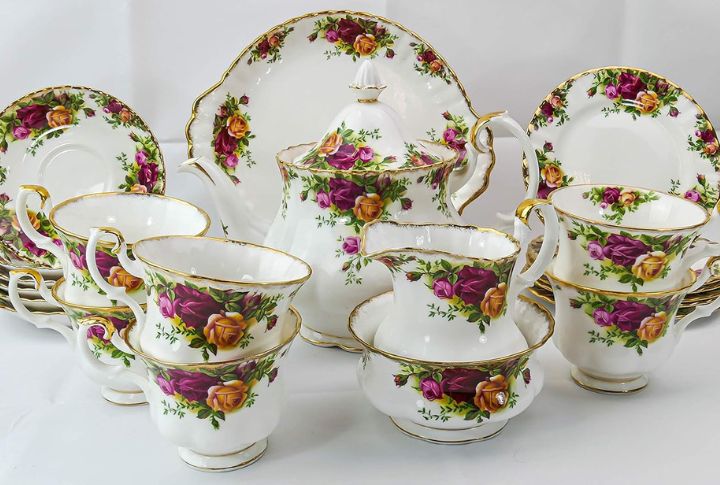
Step into an English country garden in full bloom, and you’ll understand the magic of Royal Albert’s Old Country Roses. This is one of the most beloved and widely collected bone china patterns in the world. Launched in 1962, its lush red, pink, and yellow roses framed in gold trim bring instant elegance to any table.
Pyrex Autumn Harvest
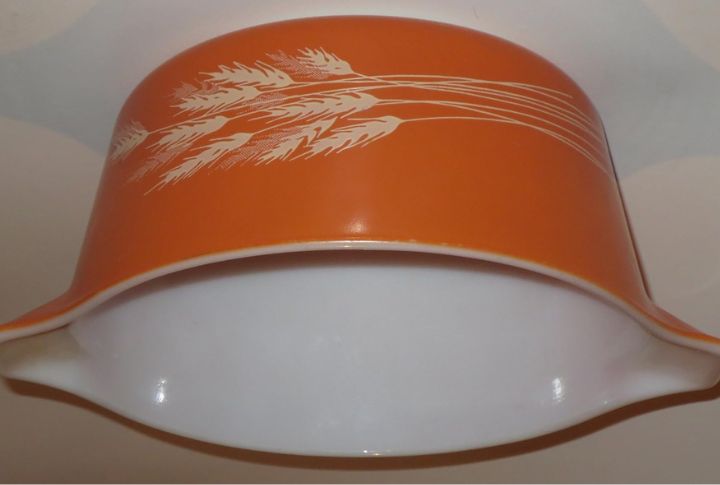
Produced only from 1979 to 1986, these collectible pieces feature graceful white wheat stalks swaying across rust and orange backgrounds. Their warm palette captures the essence of autumn—perfect for setting a vintage-inspired table that feels both inviting and timeless.
Johnson Brothers Friendly Village
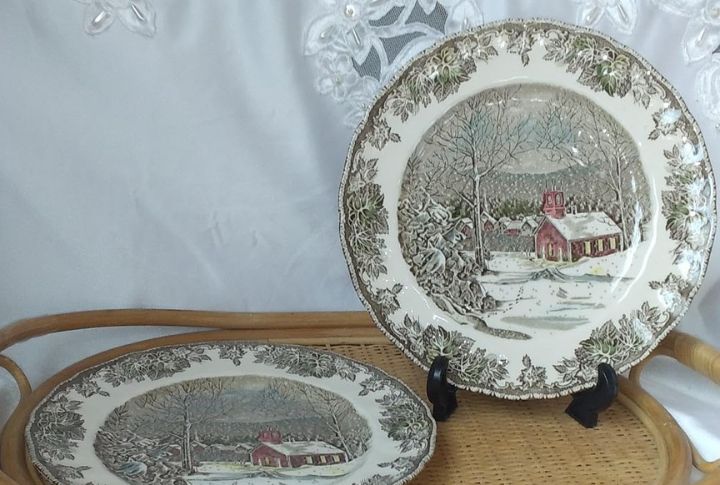
Every plate here feels like a postcard from a gentler time. Since its debut in 1953, this charming collection has told stories of English village life through soft, muted tones. With scenes that span all four seasons, it’s become a cherished favorite for holiday gatherings, especially when Thanksgiving rolls around.
Fire-King Peach Lustre
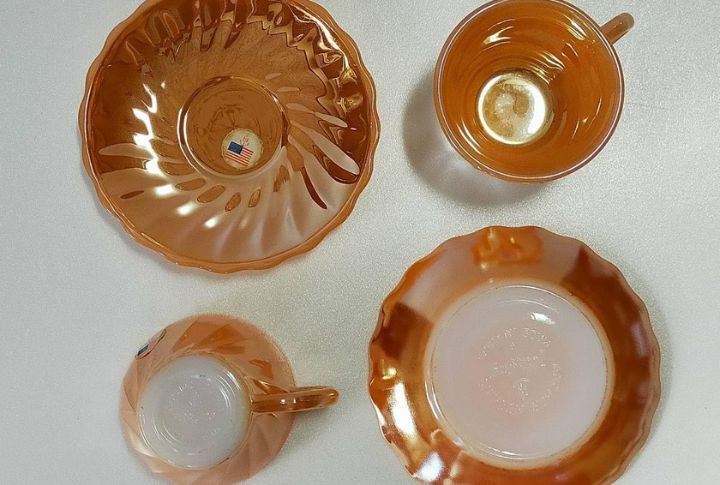
Through the 1950s, these glowing pieces brought warmth to countless kitchens, and they remain a mid-century must-have for enthusiasts today. Its iridescent peach glaze, introduced by Anchor Hocking in the 1940s, turned everyday milk glass into something mesmerizing.
Noritake Progression “Blue Haven”
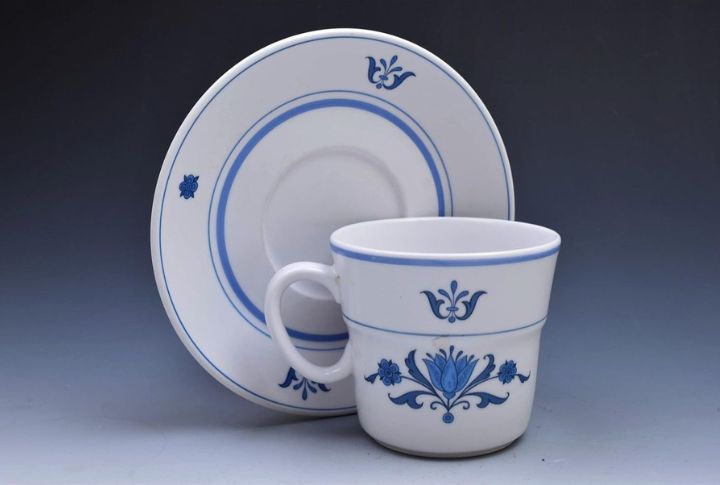
Though its complete history remains elusive, Noritake Progression’s ‘Blue Haven’ has left an unmistakable mark through its distinctive mid-century modern design. The pattern’s stylized blue leaves and geometric accents merge artistry with durability, making these sought-after pieces both practical for everyday use and prized among vintage dinnerware collectors.
Metlox Poppytrail “Homestead Provincial”
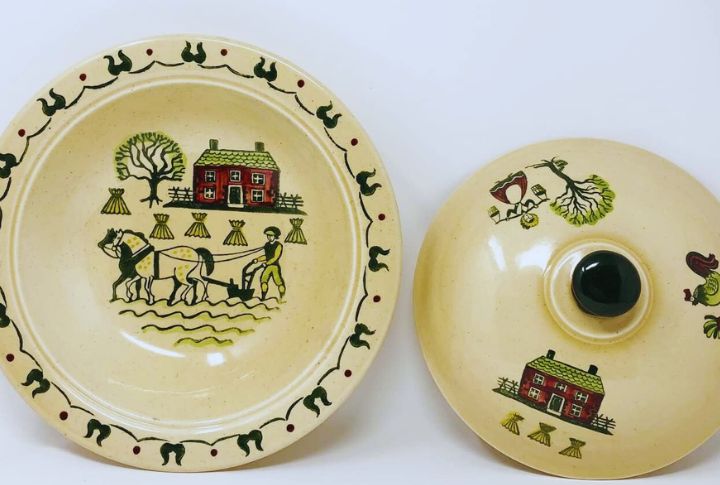
Among mid-century dinnerware, Metlox Poppytrail’s “Homestead Provincial” stands apart for its artistry and individuality. Produced from 1950 to 1982, no two pieces were exactly alike. Each one is hand-painted with rustic farm scenes that celebrate country life. The earthy charm and timeless craftsmanship of this piece make it an autumn favorite among serious collectors.
Russel Wright Iroquois Casual Harvest
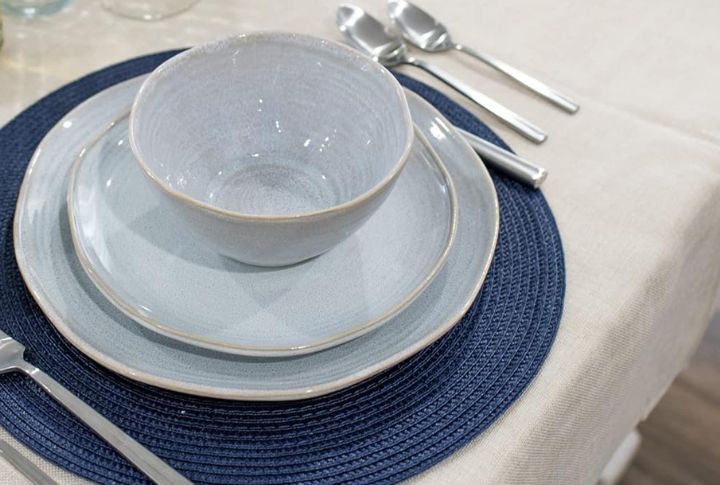
When Russel Wright envisioned a more relaxed American dining culture in the 1950s, he crafted “Iroquois Casual Harvest” as his artistic manifesto. The pattern’s modern, organic shapes and earthy glazes perfectly translated casual elegance into ceramic form, which sparked a dining revolution.

